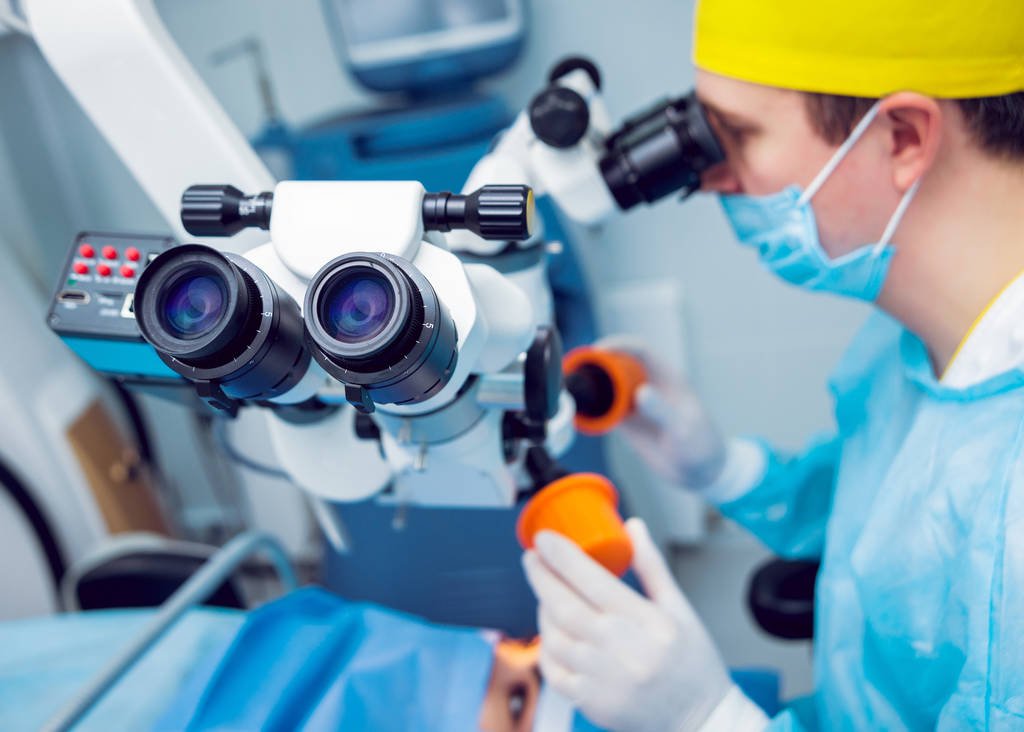What is Ophthalmic Equipment
Ophthalmic equipment refers to specialized medical devices indispensable in the field of ophthalmology. These devices are primarily used for precise examination of eye diseases, scientific diagnosis, implementation of various treatment strategies, and assessment and correction of visual functions. Due to the intricate anatomical structure and delicate physiological function of the eye, ophthalmic equipment must possess extremely high accuracy and specialization. These devices are involved throughout the entire medical process, from basic ophthalmic examinations to complex surgical interventions, forming the technological backbone of modern ophthalmic medical practice.
Importance of Ophthalmology Equipment
Accurate Diagnosis:
With high resolution and precise detection capabilities, ophthalmic equipment plays a crucial role in identifying ocular abnormalities, detecting hidden lesions at early stages, and tracking subtle changes in disease progression. Without the objective measurements and visualized assistance provided by such equipment, many accurate diagnoses would lack scientific support and be difficult to achieve.
Treatment and Surgery:
From routine treatments to highly precise ophthalmic surgeries, the use of specific equipment is essential for implementing effective intervention plans and achieving treatment goals safely. These devices directly interact with extremely delicate ocular tissues, and their performance directly affects treatment reliability and patient visual outcomes.
Driving Innovation:
The continued advancement of ophthalmology—particularly in diagnostic and therapeutic innovations—relies heavily on the development and application of advanced equipment. Ongoing upgrades and innovations in ophthalmic technology have expanded physicians’ capabilities in understanding and treating eye diseases, propelling the field forward.
Enhancing Medical Quality:
A high-quality ophthalmic care system is built on the systematic use of professional equipment. These devices optimize diagnostic and treatment workflows, enhance efficiency and standardization, and serve as essential technological support for achieving standardized, systematic, and personalized management of eye diseases. Without them, the actual diagnostic and therapeutic capabilities of modern ophthalmology would be severely limited.
Common Types of Ophthalmic Equipment
Slit Lamp
As a cornerstone of basic ophthalmic examinations, the slit lamp combines a high-brightness slit light source with a stereomicroscope system, enabling real-time layered observation of anterior segment structures such as the cornea, anterior chamber, and lens. It provides irreplaceable visual diagnostic evidence for early detection of diseases like corneal ulcers, dry eye syndrome, and cataracts.
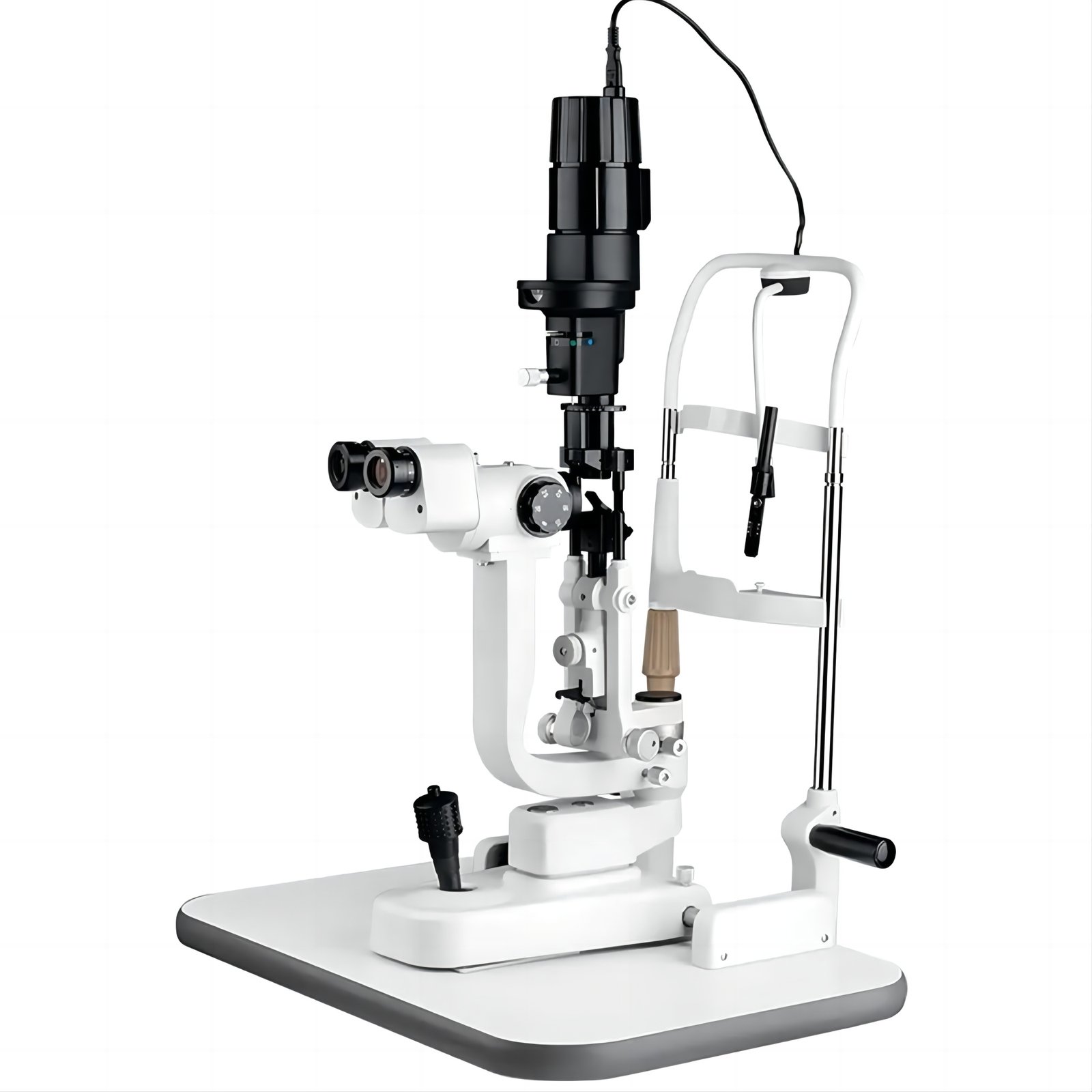
Surgical Microscope
With exceptional optical magnification, depth control, and stable three-dimensional visualization, the surgical microscope serves as the core platform for procedures like phacoemulsification for cataracts and retinal reattachment surgeries. Its imaging quality and precision directly impact surgical safety and the minimization of tissue trauma.
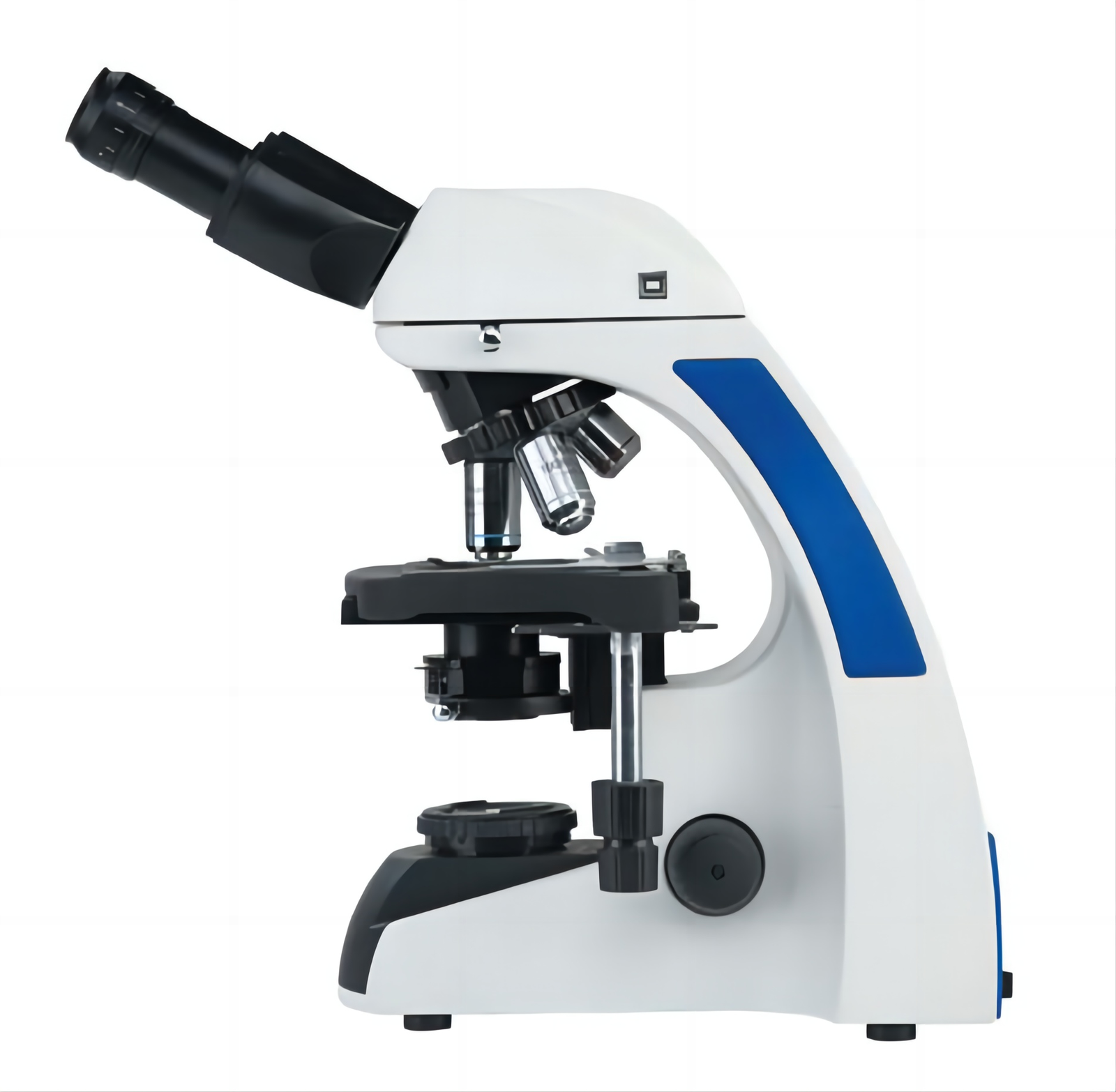
Ophthalmic Ultrasound Bio-Microscope(UBM)
Utilizing the penetrative properties of sound waves, ophthalmic ultrasound allows evaluation of the vitreous body, retina, and intraocular masses under media opacities. It plays a key role in diagnosing posterior segment diseases and measuring axial length, particularly valuable in assessing complex ocular trauma and tumors.
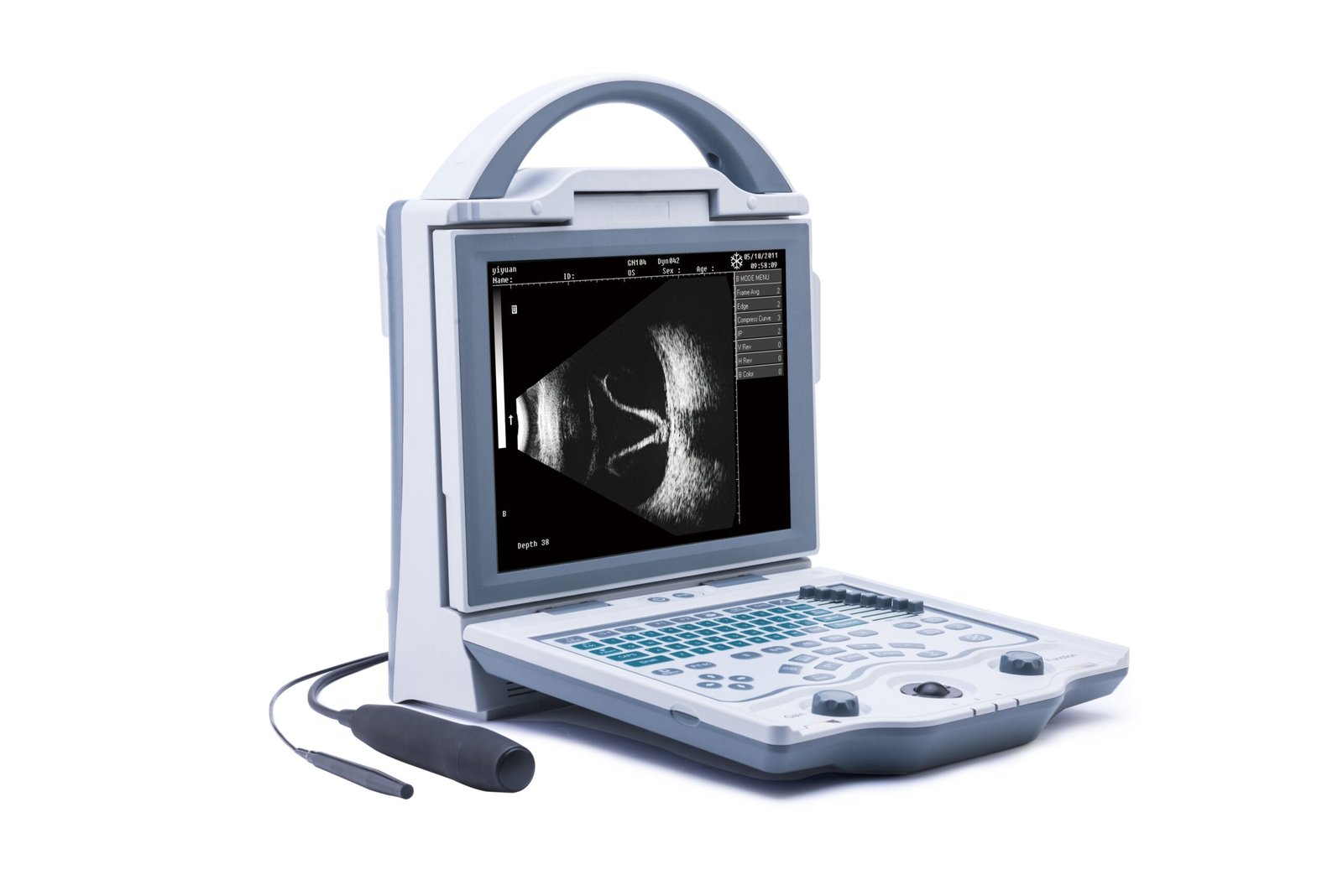
Keratomer/Refractometer & Phachymeter
- The auto refractometer employs wavefront analysis to quickly determine total refractive errors and higher-order aberrations, laying the foundation for personalized vision correction strategies.
- The pachymeter measures central corneal thickness using high-frequency ultrasound or optical principles, serving as a core tool in evaluating refractive surgery thresholds, monitoring keratoconus progression, and guiding glaucoma medication.

Perimetry Machine (Visual Field Analyzer)
Using standardized light stimulation patterns, perimeters systematically map visual field sensitivity, precisely locating glaucomatous optic nerve damage and quantifying stroke-related field defects. They provide dynamic monitoring and objective evidence for surgical intervention timing in neuro-ophthalmic disorders.
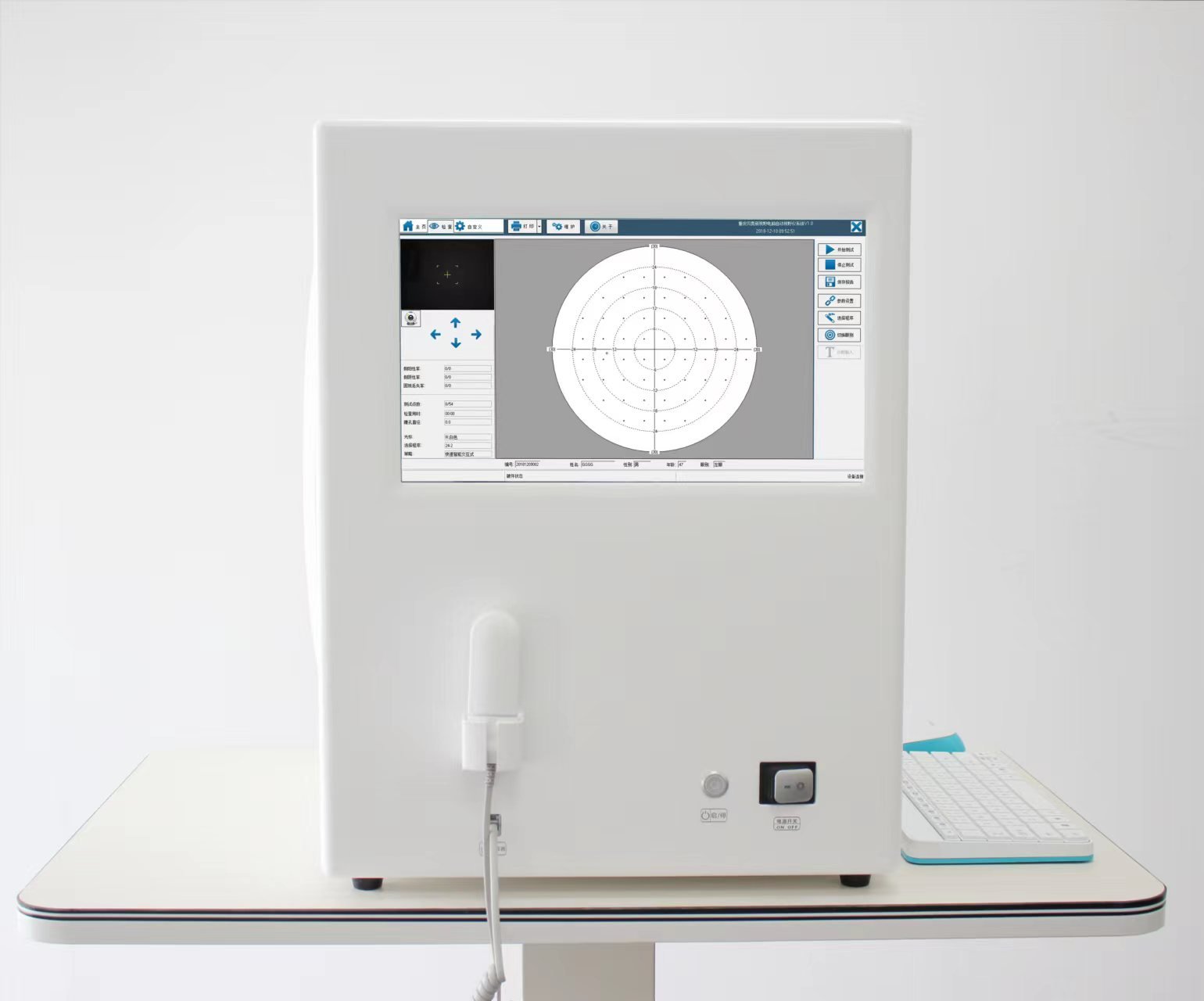
OCT (Optical Coherence Tomography)
Based on low-coherence light interferometry, OCT non-invasively generates quantitative 3D data of retinal layers, macular regions, and the nerve fiber layer. It allows micron-level tracking of pathologies like diabetic macular edema and glaucomatous neuronal loss, ushering in an era of precision imaging for retinal disease management.

Lensmeter
As a core quality control device for optical correction products, the lensmeter accurately analyzes spherical, cylindrical, axis, and prism values of lenses. It ensures strict matching between prescription parameters and optical centers of eyeglasses or contact lenses, preventing refractive errors and preserving visual quality.
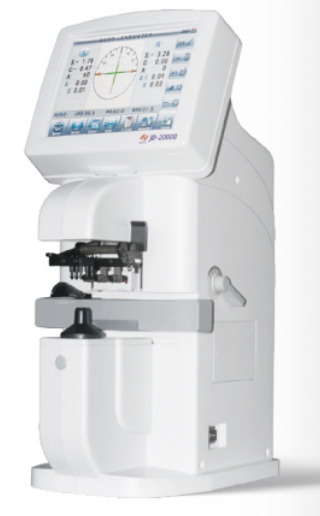
Non-contact Tonometer
Employing a high-speed air pulse to flatten the cornea, non-contact tonometers offer efficient intraocular pressure screening with low infection risk. Continuous IOP data supports layered glaucoma management, disease progression evaluation, and surgical decision-making.
Fundus Camera
Integrating wide-angle imaging and multi-wavelength photography, the fundus camera records microvascular leakage, optic disc changes, and macular pathology. It is the gold standard for diagnosing and staging diabetic and hypertensive retinopathy, as well as a key tool for long-term disease follow-up.
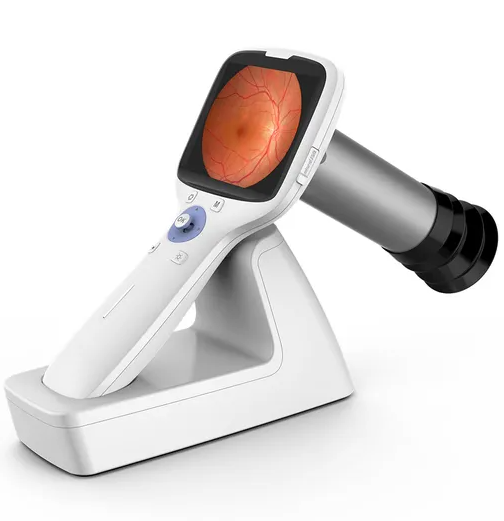
YAG Laser for Ophthalmology
The Q-switched Nd:YAG laser precisely cuts posterior capsule opacification after cataract surgery or creates peripheral iridotomy channels in acute angle-closure glaucoma. These minimally invasive procedures efficiently relieve optical pathway obstructions without surgery, reducing the risk of secondary operations.
Selecting the Right Ophthalmic Equipment
Quality and Durability:
Evaluate the materials and structural design of core components. Choose devices with stable optical performance and mechanical resilience. Their reliability directly affects continuity in clinical workflows and long-term maintenance costs.
Manufacturer Reputation:
Assess the manufacturer’s industry certifications, R&D background, and global service network. Established manufacturers can offer full technical support and product lifecycle upgrades, minimizing operational risks.
Ergonomics and Usability:
Designs should align with daily clinical operations. Devices with adjustable viewing systems and intuitive controls can significantly improve efficiency and reduce occupational strain over prolonged use.
Compliance with Medical Standards:
Ensure that devices meet regional medical regulatory requirements and international standards. Complete quality control documentation and traceable technical specifications are critical for data integrity and patient safety.
Conclusion
In conclusion, various specialized ophthalmic devices—from basic examination tools to sophisticated surgical platforms—are the foundation of modern ophthalmology’s ability to deliver accurate diagnoses, effective treatments, and high-quality medical services. To maximize their clinical value, healthcare institutions must rigorously evaluate factors such as quality, durability, manufacturer credentials, user experience, and regulatory compliance when introducing new equipment.
In this regard, CN MEDITECH, as a professional medical equipment supplier, excels in integrating top global ophthalmic brands and offers deep market insights. The company supports medical institutions in accurately selecting the most suitable equipment solutions while providing critical technical assistance, compliance assurance, and lifecycle management. CN MEDITECH serves as a vital bridge between advanced ophthalmic technology and clinical needs.

